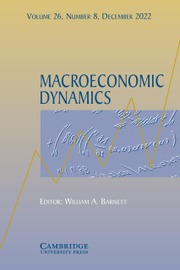No CrossRef data available.
Article contents
A time-varying estimation of an external reaction function for European Monetary Union countries: the role of risk-aversion and financial openness
Published online by Cambridge University Press: 17 July 2025
Abstract
This paper aims at reexamining external sustainability in a dynamic framework for nine European Monetary Union (EMU) countries during the period 1970–2021. We extend the approach of Bohn (1998) to a time-varying external reaction function. The main advantage of our empirical strategy is that it captures the dynamics of the external reaction function, by accounting for the main sources of heterogeneity among EMU countries and by including common factors like financial globalization and global risk aversion. To estimate the model, we employ a fully fledged state-space framework, which extends the simple model generally used in this literature to a panel-data time-varying parameter framework, combining fixed (common and country-specific) and varying components. Our results show an evident interplay between real and financial variables, the latter progressively increasing their importance. Although heterogeneous, the adjustment to external imbalances in most EU countries is jointly driven by the level reached in the stock of net foreign assets together with the degree of risk aversion and financial openness.
Keywords
Information
- Type
- Articles
- Information
- Copyright
- © The Author(s), 2025. Published by Cambridge University Press

